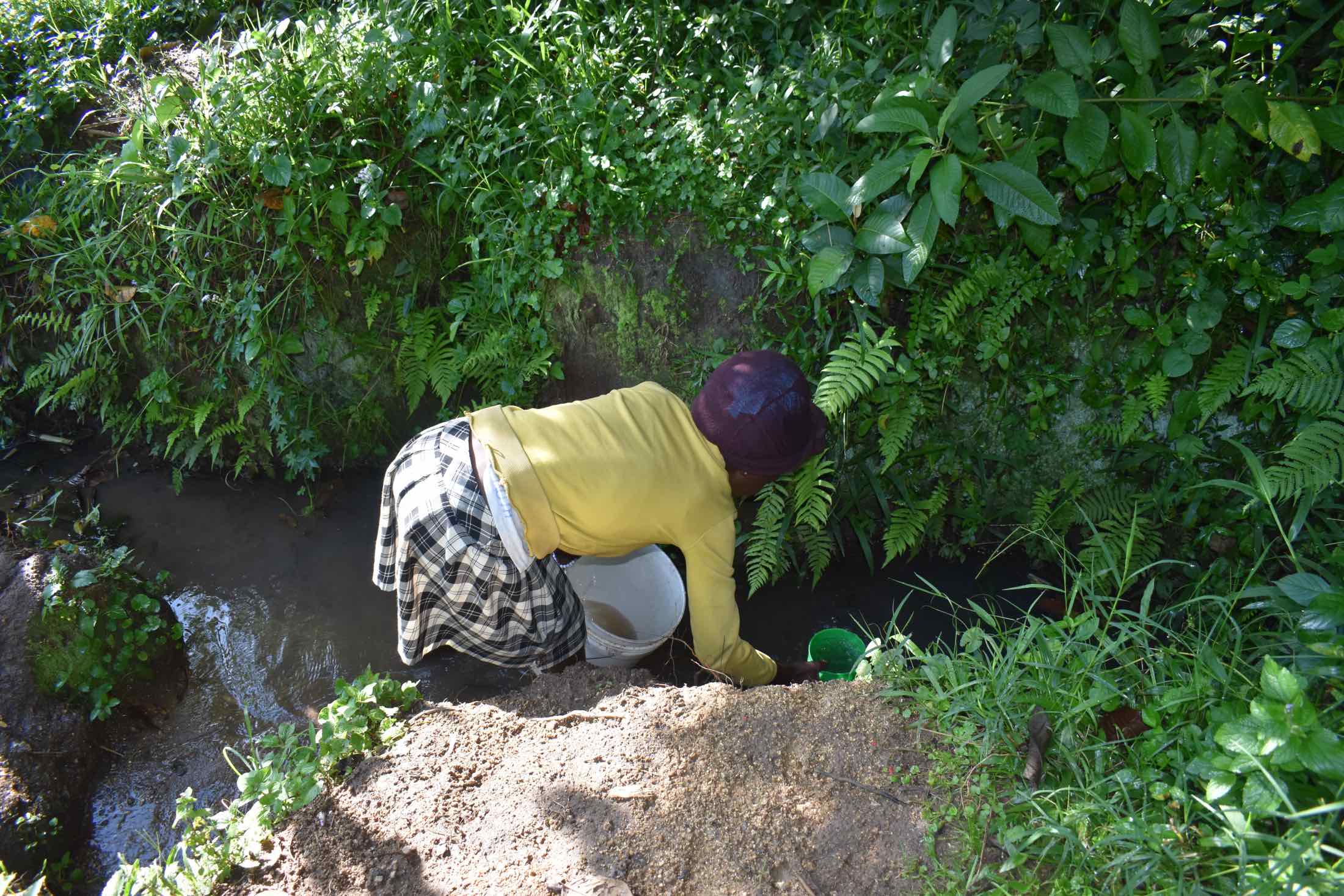Isembe Community's biggest problem is water quality, and it's not difficult to see why.

Their water source for the community of 210 is open to contamination from anything strolling through the surrounding maize fields: birds, livestock, snakes, and, of course, people. According to the interviewees, the reported health effects were stomachaches, diarrhea, and typhoid. This is all due to the poor environmental hygiene of both the water point and the community members' water storage.
"My grandchildren have had issues with stomachaches," said Mark Inyende, a farmer, community member, and the spring's namesake. "Most of the time when they get to hospital, it is said we [must] observe [good] hygiene."

But health issues are only the first in a long list of problems caused by lack of access to clean water in Isembe. Community members waste time walking to the far-away water point, waiting in line, and then waiting for the sediment to settle after their fellow community members scoop water for themselves. Conflict sometimes arises at the source when a person dirties the water while scooping, not minding the other users waiting.

There are also significant financial issues in the community. Currently, the community members are spending most of their money on medicine. This money could be used for other development activities, like starting a business. Most of the households in Isembe can only grow enough food to feed the community; as of right now, they can't even dream of selling any surplus, because there isn't any.
"I am really looking forward to seeing the spring protected," Mark concluded.
What We Can Do:
Spring Protection
Protecting the spring will help provide access to cleaner and safer water and reduce the time people have to spend to fetch it. Construction will keep surface runoff and other contaminants out of the water. With the community’s high involvement in the process, there should be a good sense of responsibility and ownership for the new clean water source.
Fetching water is a task predominantly carried out by women and young girls. Protecting the spring and offering training and support will, therefore, help empower the female members of the community by freeing up more of their time and energy to engage and invest in income-generating activities and their education.
Training on Health, Hygiene, COVID-19, and More
To hold trainings during the pandemic, we work closely with both community leaders and the local government to approve small groups to attend training. We ask community leaders to invite a select yet representative group of people to attend training who will then act as ambassadors to the rest of the community to share what they learn. We also communicate our expectations of physical distancing and wearing masks for all who choose to attend.
The training will focus on improved hygiene, health, and sanitation habits in this community. We will also have a dedicated session on COVID-19 symptoms, transmission routes, and prevention best practices.
With the community’s input, we will identify key leverage points where they can alter their practices at the personal, household, and community levels to affect change. This training will help to ensure participants have the knowledge they need about healthy practices and their importance to make the most of their water point as soon as water is flowing.
Our team of facilitators will use a variety of methods to train community members. Some of these methods include participatory hygiene and sanitation transformation, asset-based community development, group discussions, handouts, and demonstrations at the spring.
One of the most important issues we plan to cover is the handling, storage, and treatment of water. Having a clean water source will be extremely helpful, but it is useless if water gets contaminated by the time it is consumed. We and the community strongly believe that all of these components will work together to improve living standards here, which will help to unlock the potential for these community members to live better, healthier lives.
We will then conduct a small series of follow-up trainings before transitioning to our regularly scheduled support visits throughout the year.
Training will result in the formation of a water user committee, elected by their peers, that will oversee the operations and maintenance of the spring. The committee will enforce proper behavior around the spring and delegate tasks that will help preserve the site, such as building a fence and digging proper drainage channels. The fence will keep out destructive animals and unwanted waste, and the drainage will keep the area’s mosquito population at a minimum.

 Protected Spring
Protected Spring
 Rehabilitation Project
Rehabilitation Project














